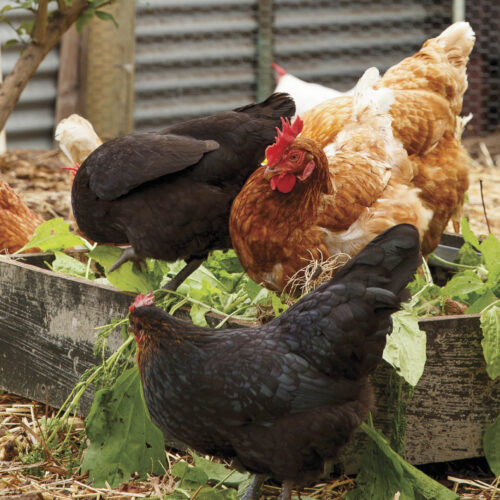Free-range eggs – new definition a debacle
2016-04-06T06:14:56+10:00
Editor STEVE PAYNE highlights the drawbacks of the new definition of free-range eggs.
For years, without a strict production and labeling standard, some egg producers have been stretching the essence of the term ‘free-range’ to the limits. Consumers have been rightly miffed, as have genuine free range and organic egg producers who go to considerable cost and effort to ensure the better treatment of their flocks.
But last week (31 March), a new enforceable, national standard was at last introduced for egg producers who wish to label their eggs as ‘free-range’. But don’t pop the champagne yet, there are some serious drawbacks.
This new standard requires that hens have meaningful and regular access to outdoor range, and places a ceiling on the density of chickens outdoors at no more than 10,000 hens per hectare (1 hen per m2). Farmers of free-range eggs must also prominently disclose the outdoor stocking density of hens, allowing consumers to make an informed choice. 1
Organic eggs certified by accredited bodies must adhere to much stricter standards. Egg farmers can’t stock more than 1500 birds per hectare if they are set stocking, or up to 2500 birds per hectare for layers on pasture rotations.
While a clear legal definition of the term is welcomed, this does mean that smaller farms with fewer than 1500 hens per hectare will be competing in the same market as those with 10,000. Unless consumers are vigilant about reading the stocking density on labels, and are prepared to pay more, smaller farms with more poultry welfare-centred systems and higher labour and production costs are likely to lose out.
When it comes to animal welfare, there are a number of issues not addressed by the definition. Research has found that chickens are ideally suited to flocks of 12, and the larger the flock, the more stressful for the chicken. We can’t ask the chooks themselves, but being grouped with 10,000 birds is likely to be highly stressful.
Commercial free range systems house hens in barns with access to outdoor range. The stocking density in barns is much higher than on range – the industry standard is 30kg per m2 for laying fowls, around 15 hens per m2. 2
Producers have found that not all fowls will venture out onto pasture, especially if it’s an open paddock, and instead remain inside, where they feel safer. Farms don’t provide feed and water outside as it will attract rodents and wild birds. 3 And under the new definition, while hens may have access to the outdoors, they don’t have to actually go outside to be labelled ‘free-range’. Effectively, the concentration of hens in the barn at night and when not on the range may, for big commercial operations, be way over the new standard 1 hen per m2.
Management is as important as stocking density. Hens that spend time in barns require well-maintained litter, but may simply have a slatted floor. Outside, the birds need cover, greenery, windbreaks and shade, but are likely to have a bare paddock. Without skilled management, up to 10,000 chickens per hectare represents a significant deleterious impact on the environment.
It’s no surprise Choice has rejected the new standards as ‘misleading’ and instead wants ministers to allocate the label ‘free range’ to farmers who run no more than 1500 hens per hectare. Choice is calling for consumers to boycott 19 brands of eggs that have an outdoor stocking density of up to 10,000 hens per hectare, and has provided a buyers’ guide to eggs on its website. 4
OG poultry writer Jessamy Miller encourages everyone to find out exactly what system hens are kept under before buying.
“Eggs from hens that may not go outside and are kept at such high stocking densities do not fit my definition of free range, and consumer pressure is the most direct way we can express our views on this decision,” Miller said.
“If circumstances permit, keeping a few hens in the backyard yourself is a far more humane (and fun) way to obtain eggs.”
References
(1) http://consumerlaw.gov.au/communiques/meeting-8-2/
(2) https://ris.govspace.gov.au/2016/03/31/free-range-egg-labelling-2/
(3) http://www.chicken.org.au/page.php?id=150
(4) https://www.choice.com.au/food-and-drink/meat-fish-and-eggs/eggs/articles/choice-calls-for-bad-egg-boycott-310316






